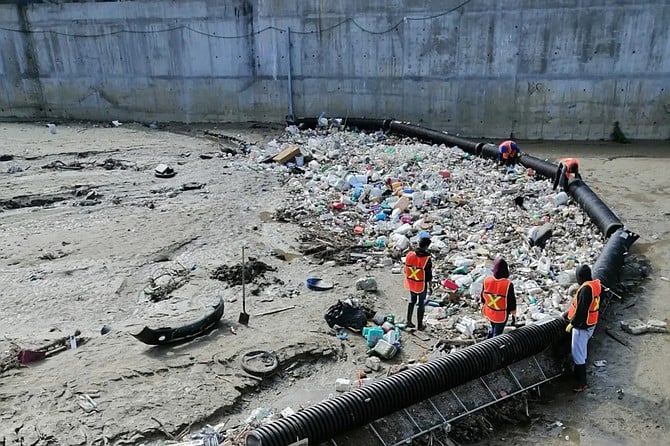 Facebook
Facebook
 X
X
 Instagram
Instagram
 TikTok
TikTok
 Youtube
Youtube

These look like glory days for design in San Diego. Not only has the San Diego-Tijuana twin-city region been named the Design Capital of the World for 2024 — the first binational conurbation ever to receive this honor — but famed design guru Don Norman of Pacific Beach/La Jolla and UCSD has launched a worldwide design contest for newbies in the design field. But will it just be a year of design types droning on about a “future together” for SD-TJ, with no radical design ideas actually becoming realities? Or can this dynamic guy Norman get us off our backsides to start designing a bicultural future that will make other fractured border cities sit up and take notice?
Anil Kripalani, who’s running Norman’s contest, says there’s real hope it will attract some great ideas. “Don Norman champions ‘human-centered design,’” he says. For instance, Norman’s famous in the design community for becoming the enemy of any door that an ordinary Joe might have difficulty figuring out how to get through. “The worst of them,” Kripalani says, “we now call ‘Norman Doors.’” Like, doors with a flat surface that looks like it should be pushed, but which you actually have to pull, or doors with revolving handles that don’t actually unlatch the door.
I’m of two minds about this. I once got stuck in a revolving door with Henry Kissinger in the opposite wedge. If it hadn’t been for that stuck door, I never would have seen him smile at me. Kissinger! Smiling! Not that I’ve ever forgiven his bombing recommendations in Southeast Asia. Still.

Norman’s most famous book (he’s written 21 of them) is The Design of Everyday Things. He wants designs that “evoke emotional responses.” Good design should be “delightful,” he says. This is the kind of language that sets him apart as a designer. “Norman says beautifully designed products make people actually feel good,” says Kripalani. “Humanity-centered design implies that you worry about humanity, about a design’s impact on society, not just building a product or service that is meant to make money for the product company.”
Kripalani wants designers who are “thinking about the society, thinking about the environment, about all the earth. It sounds big, but no, it’s very real — in the sense that somebody has worked on a project to improve the quality of life around them. Our contest wants to recognize that.”
One such effort is being undertaken by the nonprofit Wildcoast, which is designing and building trash booms that will stop plastic bottles and tires from flowing down the Tijuana River and out into the ocean. Last I saw, they had prevented 73 million pounds of solid waste from entering the estuary (and then the Pacific). To professor Norman, says Kripalani, that, too, is beautiful design work. “Design isn’t just about pretty coffee jugs and swing doors that swing. Somebody has worked on a project to improve the quality of life around them. We want to recognize that.”


These look like glory days for design in San Diego. Not only has the San Diego-Tijuana twin-city region been named the Design Capital of the World for 2024 — the first binational conurbation ever to receive this honor — but famed design guru Don Norman of Pacific Beach/La Jolla and UCSD has launched a worldwide design contest for newbies in the design field. But will it just be a year of design types droning on about a “future together” for SD-TJ, with no radical design ideas actually becoming realities? Or can this dynamic guy Norman get us off our backsides to start designing a bicultural future that will make other fractured border cities sit up and take notice?
Anil Kripalani, who’s running Norman’s contest, says there’s real hope it will attract some great ideas. “Don Norman champions ‘human-centered design,’” he says. For instance, Norman’s famous in the design community for becoming the enemy of any door that an ordinary Joe might have difficulty figuring out how to get through. “The worst of them,” Kripalani says, “we now call ‘Norman Doors.’” Like, doors with a flat surface that looks like it should be pushed, but which you actually have to pull, or doors with revolving handles that don’t actually unlatch the door.
I’m of two minds about this. I once got stuck in a revolving door with Henry Kissinger in the opposite wedge. If it hadn’t been for that stuck door, I never would have seen him smile at me. Kissinger! Smiling! Not that I’ve ever forgiven his bombing recommendations in Southeast Asia. Still.

Norman’s most famous book (he’s written 21 of them) is The Design of Everyday Things. He wants designs that “evoke emotional responses.” Good design should be “delightful,” he says. This is the kind of language that sets him apart as a designer. “Norman says beautifully designed products make people actually feel good,” says Kripalani. “Humanity-centered design implies that you worry about humanity, about a design’s impact on society, not just building a product or service that is meant to make money for the product company.”
Kripalani wants designers who are “thinking about the society, thinking about the environment, about all the earth. It sounds big, but no, it’s very real — in the sense that somebody has worked on a project to improve the quality of life around them. Our contest wants to recognize that.”
One such effort is being undertaken by the nonprofit Wildcoast, which is designing and building trash booms that will stop plastic bottles and tires from flowing down the Tijuana River and out into the ocean. Last I saw, they had prevented 73 million pounds of solid waste from entering the estuary (and then the Pacific). To professor Norman, says Kripalani, that, too, is beautiful design work. “Design isn’t just about pretty coffee jugs and swing doors that swing. Somebody has worked on a project to improve the quality of life around them. We want to recognize that.”
Comments